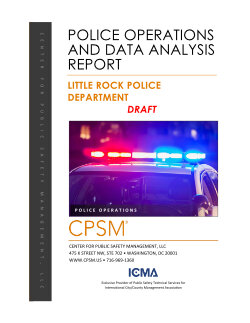By Dianne Beer-Maxwell, Jon Blum, Timothy Bonadies, Jessica Herbert, and Peggy Schaefer
When performing official duties, law enforcement officers rely heavily on knowledge and skills learned during basic academy training. Entry-level law enforcement training is typically delivered in topic-centric classes with little or no connection between concepts, despite significant content overlap. For example, an understanding of search and seizure law is applicable across many contexts, including in lessons about motor vehicle stops, arrests, investigation, use of force, and interview and interrogation. Similarly, communication skills are needed across the board to be effective at interviewing people, de-escalating violent situations, and building relationships with the community. Existing research from other professions recommends integrating or reinforcing foundational and overlapping content consistently to help people retain critical knowledge and skills. The concept of integrating and reinforcing training content consistently has not previously been tested in law enforcement. The Academy Innovations project evaluates the results of reinforcing a critical foundational skill across multiple topics through use of an integrated curriculum in a basic academy setting. In this guide we will 1. introduce and define the concepts of integrated curriculum and retention interval; 2. explain a groundbreaking study that examined the effects of integrated curriculum on retention interval in five law enforcement academies; 3. present eight best practices for integrating curricula in law enforcement academies.
Washington, DC: Office of Community Oriented Policing Services. 2023. 24p.










